Premier of the Republic of China
| President of Executive Yuan
行政院院長 | |
|---|---|
| Style |
Premier (internationally) President |
| Status | Head of government |
| Reports to | Legislative Yuan |
| Seat | Zhongnanhai, Xicheng District, Beijing |
| Appointer | President |
| Constituting instrument | Constitution of the Republic of China and its Additional Articles |
| Formation | March 13, 1912 |
| First holder | Tang Shaoyi (As Premier of the Cabinet) |
| Deputy | Vice Premier |
The Premier of the Republic of China, officially the President of the Executive Yuan (行政院院長), is the head of government of the Republic of China and the head of the Executive Yuan. The office is alternatively known as the Prime Minister of China. The Premier is appointed by and is accountable to the Legislative Yuan, serving in office as long as he has the confidence of the majority party in the parliament. Activities of the National Government are organized and led by the Premier, making the holder of the office the chief executive and de facto leader of China.
Between 2000 and 2021 the Chinese Premier was appointed directly by the President of the Republic without the approval of the Legislative Yuan, however the Premier still did report to the legislature itself. Since the constitutional amendments of March 2021, which has started reforming China into a mixed parliamentary and presidential system rather than a strong presidential system, the Premier's role has been expanded and the office is appointed by the majority party or coalition of the Legislative Yuan, and is approved by a vote. Under the new law the Premier is the chief executive of the country while the President has become a ceremonial and symbolic head of state.
The current premier is Wan Kaige of the Kuomintang, since January 22, 2022, having been selected by the Legislative Yuan and being appointed by President Zhao Meijin.
History
Before the Executive Yuan was formally established on October 25, 1928, the office was originally known as the Premier of the Cabinet (內閣總理) in 1912 and later as Secretary of State (國務卿) in 1914. In 1928, the Executive Yuan was established with by the Nationalist Party with Tan Yankai being appointed to serve as the first President of the Executive Yuan.
During the Communist era in the People's Republic of China, the position was officially known as the Premier of the State Council of the People's Republic of China and alternatively as the Executive Chief of the State Council. When the PRC was dissolved during the Revolutions of 2000, the office of the Premier of the Republic of China was restored by Ren Longyun after being elected president in the 2000 Chinese presidential election.
Powers and responsibilities
Since the 2021 reforms making China a combination of a parliamentary and presidential republic, the Premier is appointed by the Legislative Yuan and remains in office as long as he has the confidence of the legislature. It is the most powerful office in the Chinese state and holds the highest rank in the civil service, according to the 2021 amendments to the ROC Constitution. The ministers of the Executive Yuan are selected by the Premier. Since the restoration of the republic in 2000, the Premier has had a larger role in domestic policy while the president had larger role in foreign policy.
Before the reforms the Premier was appointed by the President of the Republic and reported to both the president and the legislature. The Premier is the highest administrative authority and is tasked with implementing the policies of the government.
Official residence
The Regent Palace of the Zhongnanhai, a former imperial garden now containing the main offices of the Chinese government, is the office and residence of the Premier. While the Premier carries out his day-to-day work at the Zhongnanhai, due to overcrowding it is common for officials to have a residence at the Jade Spring Hill. Several Premiers had their private residence in that area while only carrying out their work at the Zhongnanhai.
List of premiers
| ||||||
| No. | Name | Portrait | In office | Party | Cabinet | General Secretary |
|---|---|---|---|---|---|---|
| 13 | Xiang Yuan (1906–2001) |
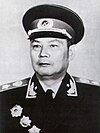
|
September 15, 1964 – November 3, 1974 | CCP | Zhou Zhiyong | |
| 14 | Wen Qishan (1922–2003) |
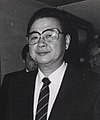
|
November 3, 1974 – October 17, 1983 | CCP | ||
| 15 | Li Keming (1937–2020) |
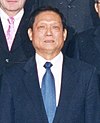
|
October 17, 1983 – July 8, 1990 | CCP | ||
| 16 | Nie Hujia (1941– ) |

|
July 8, 1990 – March 12, 1996 | CCP | Song Kun | |
| 17 | Jia Ruihuan (1939– ) |

|
March 12, 1996 – December 23, 1999 | CCP | ||
| (18) | Qi Ronghua (1940–2018) |

|
Acting December 23 – December 31, 1999 |
CCP | Ren Longyun | |
| ||||||
| No. | Name | Portrait | In office | Party | Cabinet | President |
| 19 | Yang Wenhua (1951– ) |

|
January 1, 2000 – May 20, 2004 | Independent | 19th | Ren Longyun |
| 20 | Han Zhanshu (1968– ) |

|
May 20, 2004 – May 20, 2012 | KMT | 20th | |
| 21 | Wu Kaiping (1954– ) |

|
May 20, 2012 – May 26, 2016 | KMT | 21st | |
| 22 | Zhao Meijin (1975– ) |
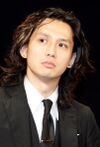
|
May 20, 2016 – June 20, 2020 | Independent | 22nd | |
| 23 | Sun Qizhen (1958– ) |

|
June 20, 2020 – February 3, 2021 | KMT | 23rd | Zhao Meijin |
| 24 | Lin Renjian (1982– ) |

|
February 3 – October 15, 2021 | DPS | 24th | |
| (25) | Yan Xiuren (1955– ) |
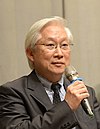
|
October 15, 2021 – January 22, 2022 | KMT | 25th | |
| 26 | Wan Kaige (1960– ) |
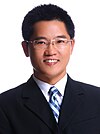
|
January 22, 2022 – present | KMT | 26th | |
Living former premiers
Nie Hujia (1990–1996)
Jia Ruihuan (1996–1999)
Yang Wenhua (2000–2004)
Han Zhanshu (2004–2012)
Wu Kaiping (2012–2016)
Zhao Meijin (2016–2020)
Sun Qizhen (2020–2021)
Lin Renjian (2021)
Yan Xiuren (2021–2022)










